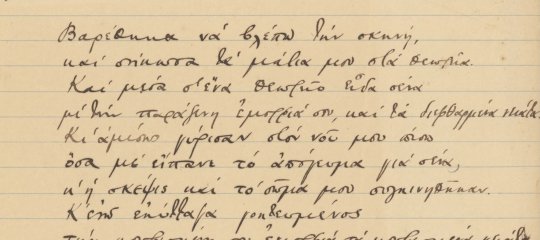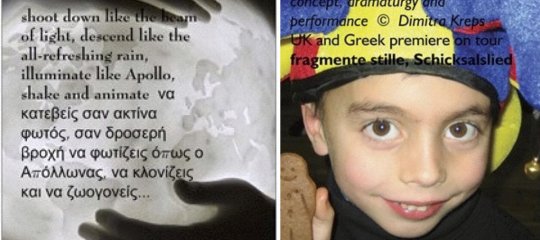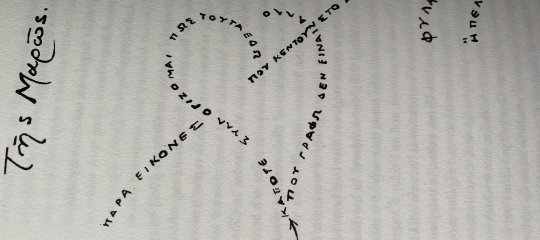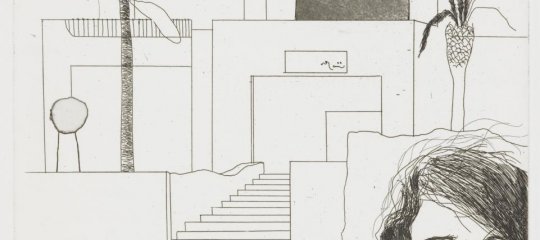Αγνή Αρτέμη: Μια πόλη που αγαπώ. Κύπρος -Κατεχόμενα 2006
frantzkyr writes, "
Kυριακή Φραντζή
Το κείμενο της Αγνής Αρτέμη που δημοσιεύω γράφτηκε στο πλαίσιο άσκησης γραφής που δόθηκε φέτος στα Ελληνικά στο τμήμα των προχωρημένων. Στην άσκηση χρησιμοποιήθηκαν ως αφορμή κείμενα των Ίταλο Καλβίνο (Οκταβία, μια φανταστική πόλη), Νίκου Καζαντζάκη(Μόσχα), Γιώργου Βέη (Σεούλ), Πήτερ Κάρεϊ (Σύδνεϋ), Κώστα Ταχτσή (Η γιαγιά μου η Αθήνα), Χριστόφορου Μηλιώνη (Κύπρος) και Άζμπερτ Χέρμπερτ (Νέα Υόρκη) από το ημερολόγιο του 2003 «Τόποι της λογοτεχνίας» των εκδόσεων Μεταίχμιο. Ζητήθηκε από τους φοιτητές να επιλέξουν το ύφος γραφής ενός από αυτά για να μιλήσουν για μια πόλη που αγαπούνε. Η φοιτήτρια επέλεξε το κείμενο για τη Νέα Υόρκη γιατί σ’ αυτήν- όπως μας είπε- ο Άζμπερτ Χέρμπερτ περιγράφει μια κρυφή πλευρά της πόλης."
22 Ιουνίου 2006
Ο ήλιος δίνει μια λάμψη στα ορθάνοιχτα απλωμένα μπροστά μας πράσινα χωράφια και στην ατέλειωτη θάλασσα. Αισθάνομαι ήρεμη σ’ αυτό το πανέμορφο και ήσυχο περιβάλλον. Προσπερνάω τους απλούς και φιλότιμους ανθρώπους, τους Τουρκοκύπριους, που ζούνε την καθημερινή ζωή τους. Για πρώτη φορά βλέπω μια Κύπρο, ένα λαό κι έναν κόσμο. Μου φαίνεται σαν ένα όνειρο.
Η φυσική ομορφιά του τόπου και η απλότητα της καθημερινής ζωής κρύβουν μια μεγάλη ιστορία πίκρας και πόνου. Μια ιστορία που αρχισε όχι μόνο με την τουρκική κατοχή του 1974, αλλά και με την επέμβαση στην Κύπρο από την ελληνική χούντα. Αυτά τα προβλήματα που προκάλεσαν κυρίως οι πολιτικοί, τώρα οι άνθρωποι, οι Ελληνοκύπριοι αλλά και οι Τουρκοκύπριοι, τα κουβαλάνε μέσα στις ψυχές και στην καρδιά τους.
Φτάνουμε στην Αμμόχωστο όπου βλέπω καταστραμένα χτίρια που δεν έχουν φτιαχτεί από τότε που βομβαρδίστηκαν το’74. Υπάρχουν ακόμα ορύγματα στο χώμα, και δεν επιτρέπεται να πατήσει κανείς τα πόδια του πέρα από τα κάγκελα. Η θεία μου μας περιγράφει μια φωτογραφία που δημοσιεύτηκε στον τύπο. Ένας άνθρωπος κρέμεται από τα παράθυρα ενός κτιρίου πεθαμένος από την έκρηξη. Δυστυχώς το παρελθόν δεν ξεχνιέται, κι έτσι η Κύπρος δυσκολεύεται να κάνει βήματα προς το μέλλον.
Τα χτίρια βρίσκονται ακριβώς δίπλα στην παραλία. Περπατάω πάνω στη χρυσή άμμο και συγκεντρώνομαι στο κρυστάλινο νερό και στον ουρανό. Οι αντίθετες εικόνες των χτιρίων και της παραλίας είναι κολλημένες στη μνήμη μου. Από τη μια μεριά μια πικρή εικόνα του παρελθόντος που θυμίζει πόλεμο. Από την άλλη, μια εικόνα ελπίδας και ειρήνης που εύχομαι να αντιπροσωπεύει το μέλλον.
Φεύγουμε, και στο πεζοδρόμιο βλέπω μια γάτα κι ένα σκύλο να περπατούν μαζί χαρούμενα. Σκέφτομαι ότι αυτή η γάτα κι αυτός ο σκύλος που είναι συνήθως εχθροί, έχουν γίνει φίλοι. Μήπως κι εμείς που δεν είμαστε ζώα, αλλά άνθρωποι, μπορούμε να ενώσουμε την Κύπρο; Δεν ξέρω, το μόνο που ξέρω είναι ότι ειρήνη στο μέλλον δε γίνεται με μίσος, ρατσισμό, φόβο και υποψία. Δεν μπορούμε να κάνουμε βήματα μπρος αν βλέπουμε πάντα πίσω μας. Βέβαια, απλές λύσεις δεν υπάρχουν για ένα τόσο πολύπλοκο θέμα.
Μάϊος 2006
- Εισέλθετε στο σύστημα για να υποβάλετε σχόλια










